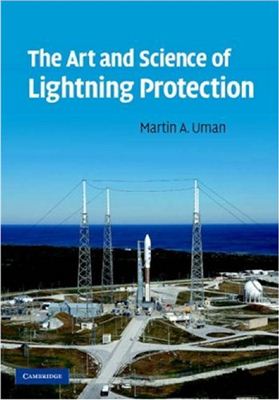Cambridge University Press, 2008, 240 pages
A lightning strike to an unprotected object or system can be disastrous - in the United States lightning is responsible for over 30% of all electric power failures, causes billions of dollars' worth of property damage, and an average of 85 fatalities a year. This accessible text describes all aspects of lightning protection and includes many illustrative drawings and photographs. The author examines the physical behavior of lightning, various types of lightning damage, the role of lightning detection and waing in effective protection, as well as options for deflecting or eliminating lightning. U.S. and inteational lightning protection standards are discussed. This book will be essential reading for everyone involved in the business of lightning protection, including meteorologists, atmospheric scientists, architects, engineers, and fire-safety experts. Insurance practitioners and physicians will find this reference of significant value.
What is lightning?
Lightning damage
General methods for lightning protection: Faraday cages, topological shields; and more practical approaches: cone of protection and rolling sphere methods
Structure protection: air terminals and down conductors
Structure protection: grounding
Surge protection for electronics in low-voltage electrical systems
Humans and animals
Lightning waing
Airships, airplanes, and launch vehicles
Ships and boats
Trees
Overhead and underground power and communication lines
Lightning elimination
So, what do we know and what don’t we know about lightning protection?
A lightning strike to an unprotected object or system can be disastrous - in the United States lightning is responsible for over 30% of all electric power failures, causes billions of dollars' worth of property damage, and an average of 85 fatalities a year. This accessible text describes all aspects of lightning protection and includes many illustrative drawings and photographs. The author examines the physical behavior of lightning, various types of lightning damage, the role of lightning detection and waing in effective protection, as well as options for deflecting or eliminating lightning. U.S. and inteational lightning protection standards are discussed. This book will be essential reading for everyone involved in the business of lightning protection, including meteorologists, atmospheric scientists, architects, engineers, and fire-safety experts. Insurance practitioners and physicians will find this reference of significant value.
What is lightning?
Lightning damage
General methods for lightning protection: Faraday cages, topological shields; and more practical approaches: cone of protection and rolling sphere methods
Structure protection: air terminals and down conductors
Structure protection: grounding
Surge protection for electronics in low-voltage electrical systems
Humans and animals
Lightning waing
Airships, airplanes, and launch vehicles
Ships and boats
Trees
Overhead and underground power and communication lines
Lightning elimination
So, what do we know and what don’t we know about lightning protection?

